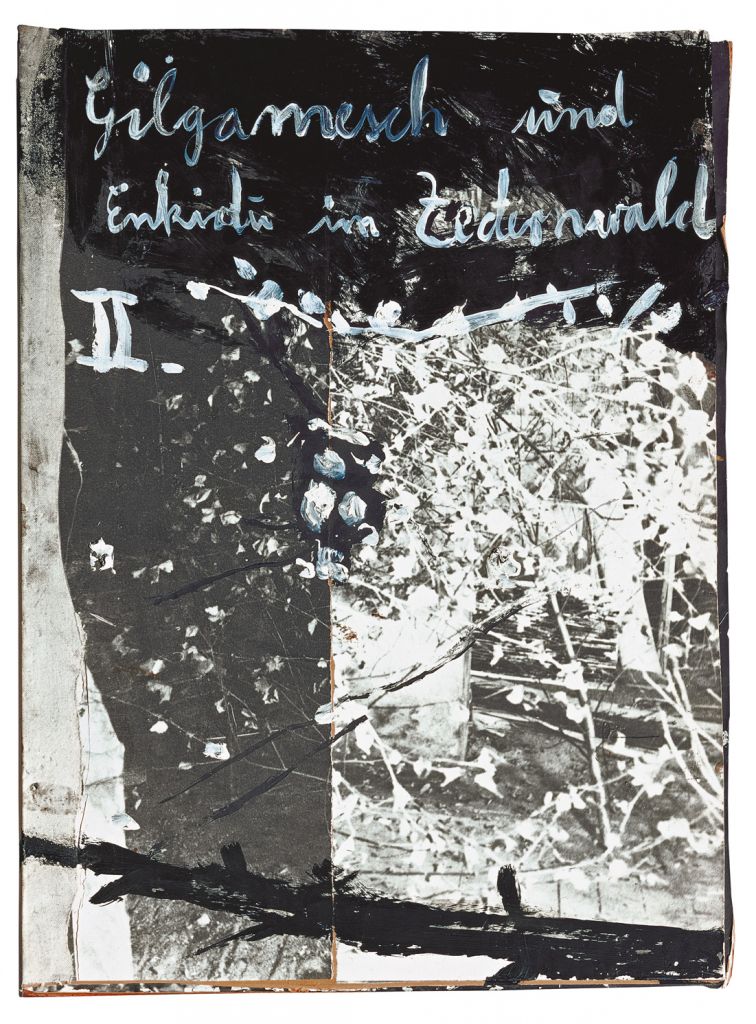Berenice
1989Lead, glass, photographs, and hair120 x 390 x 320 cm
Born in Germany just months before the final European battle of World War II, Anselm Kiefer grew up witnessing the results of modern warfare and the division of his homeland. He also experienced the rebuilding of a fragmented nation and its struggle for renewal. Kiefer dedicated himself to investigating the interwoven patterns of German mythology and history and the way they contributed to the rise of Fascism. He confronted these issues by violating aesthetic taboos and resurrecting sublimated icons. In one of his earliest projects, his 1969 Occupations (Besetzungen) series, Kiefer photographed himself mimicking the Nazi salute at various sites during a journey through Switzerland, France, and Italy. Subsequent paintings—immense landscapes and architectural interiors, often encrusted with sand and straw—invoke Germany's literary and political heritage; references abound to the Nibelung legends and Richard Wagner, Albert Speer's architecture, and Adolf Hitler. Beginning in the mid-1980s, and especially following his move to southern France in the early 1990s, Kiefer's iconography expanded to encompass more universal themes of civilization, culture, and spirituality, drawing upon such sources as the Kabbalah, alchemy, and ancient myth.
Over the course of his career, Kiefer has depicted a number of real and mythological women, from Elizabeth of Austria to Brunhilde and Lilith. Berenice (1989) refers to the third-century BCE legend of Princess Berenice of Cyrene (present-day Libya). To ensure the safe return of her husband, Berenice sacrificed her long locks of hair and dedicated them to Venus; the locks subsequently disappeared from the temple where they had been laid and were said to have been transformed into a new constellation in the night sky. In this sculpture, Kiefer alludes to the myth by means of the partial wreckage of an airplane made of lead—a wing and a fuselage that emits a disturbing stream of human hair, suggesting spent fuel or toxic black fumes. Lead airplanes are a recurring motif in Kiefer's iconography. Lead has been a key material in the artist's work as a whole since the mid-1980s and is replete with a range of associations, both historical (stemming from its importance in alchemy) and personal. The disjunctive combination of the plane and the smokelike plume of hair lends this work a charged and unsettling quality.
Source(s):
Nancy Spector. "Anselm Kiefer." In Spector, ed. Guggenheim Museum Collection: A to Z. 3rd rev. ed. New York: Guggenheim Museum, 2009.
Miguel López-Remiro. "Anselm Kiefer." In Guggenheim Museum Bilbao Collection. Bilbao: Guggenheim Museum Bilbao; Madrid: TF Editores, 2009.
"Anselm Kiefer." In The Permanent Collections of the Guggenheim Museums. Bilbao: Guggenheim Museum Bilbao, 2007.
Original title
Berenice
Date
1989
Medium/Materials
Lead, glass, photographs, and hair
Dimensions
120 x 390 x 320 cm
Credit line
Guggenheim Bilbao Museoa










